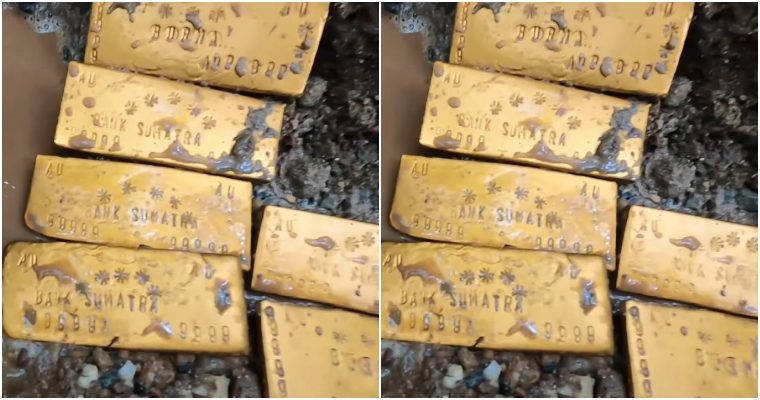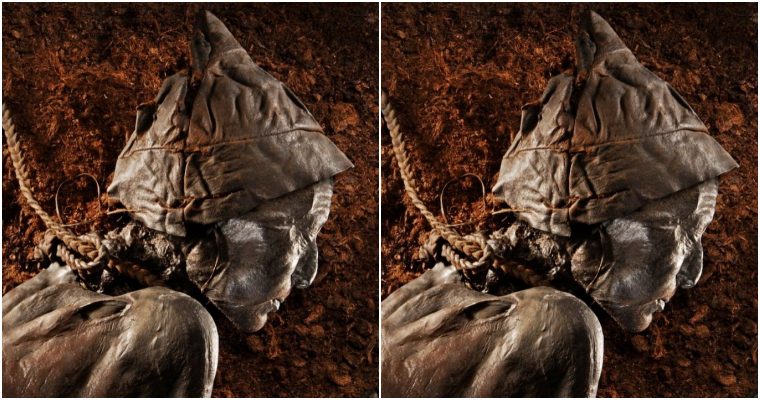When thinking about the interior decoration of a place of worship, generally includes statues of religious icons, paintings of important religious events, perhaps the strange stained glass window and the altar or shrine dedicated to the deity in question. An interior adorned with the bones of the dead does not come to mind. But a creative designer designed and created such a morbid decoration for a chapel in Portugal.
The creation of a chapel of bones.The Capela dos Ossos (which translates as “chapel of bones”) is a chapel located in Évora, in south-central Portugal. This hermitage dates from the 16th century, and is part of the Igreja Real de São Francisco (the “Royal Church of Saint Francis”). The chapel was founded by the Franciscans, a religious order within the Catholic Church, and its interior walls are decorated with human bones, hence its name. Today, the Capela dos Ossos is one of the best known and most popular monuments in Évora.
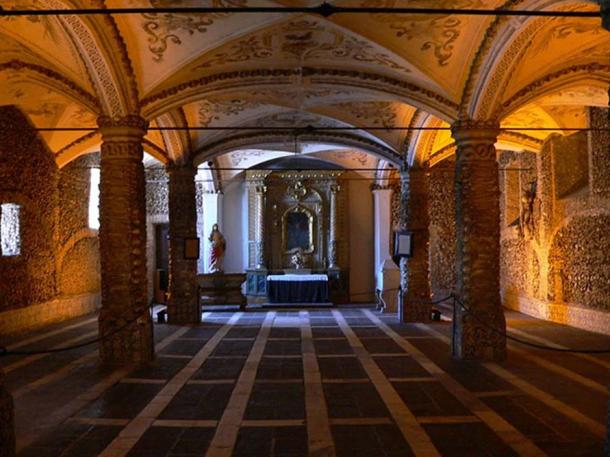
The interior of the Capela dos Ossos, Évora, Portugal ( CC BY-SA 2.0 )
The history of the Capela dos Ossos begins in the 16th century. During this period, there were up to 42/43 cemeteries in Évora. This meant that a great deal of valuable land was wasted. Instead of being used for more productive activities, such as agriculture or building construction, these lands were used to bury the dead. At some point it was decided that some of these cemeteries needed to be destroyed and reused for more productive purposes. As a result of this, the Franciscan friars who were living at that time decided to collect the bones of the deceased and have them reburied elsewhere, so that their souls would be saved from damnation.
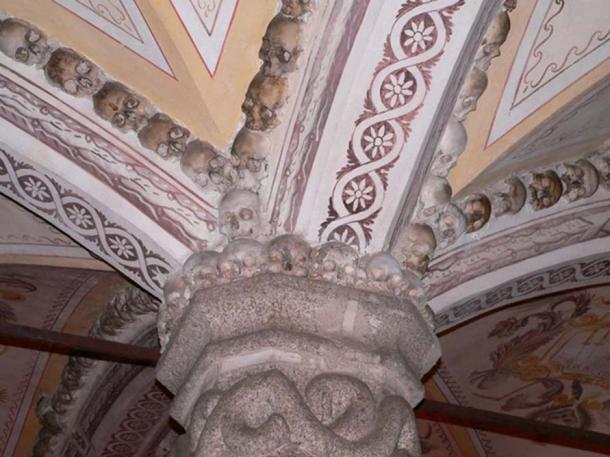
Detail of the skull-lined ceiling of the chapel ( CC BY-SA 2.0 )
In some cultures, the secondary burial of bones was a common practice. While the Franciscans could have buried the exhumed bones behind closed doors, they decided to do something very different. During the 16th century, the Counter-Reformation was in full swing in Catholic Europe and the various religious orders intervened in it. The Franciscans of Évora, in the spirit of the Counter-Reformation, decided to bury the bones in a chapel where they would be exposed for all to see. The Franciscans hoped to inspire visitors to the chapel to reflect and contemplate the transience and fragility of human life, as well as the inevitability of death, as they worried about the decline in the social values of the city’s inhabitants.
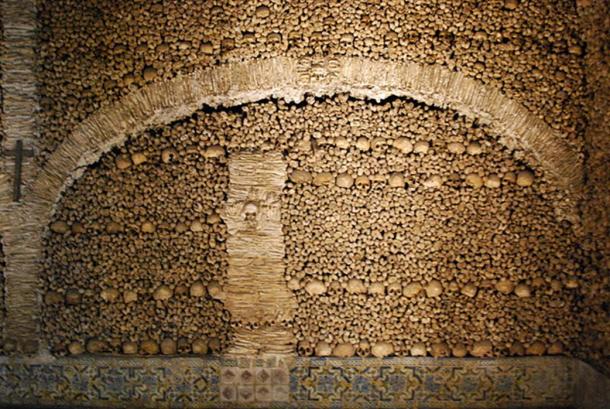
The bones and skulls were placed in different patterns by the monks ( CC BY-SA 3.0 )
behind the bonesIt has been noted that the design of the Capela dos Ossos was inspired by the Church of San Bernardino alle Ossa in Milan, Italy, best known for its ossuary. For the Capela dos Ossos, approximately 5,000 corpses were exhumed, which the Franciscans later used to decorate the walls of the chapel. According to legend, these bones belonged to soldiers who died in a great battle or were victims of a plague. In reality, however, the bones came from ordinary people who were buried in the medieval cemeteries of Évora. Regardless, the Franciscans arranged the bones in a variety of patterns.
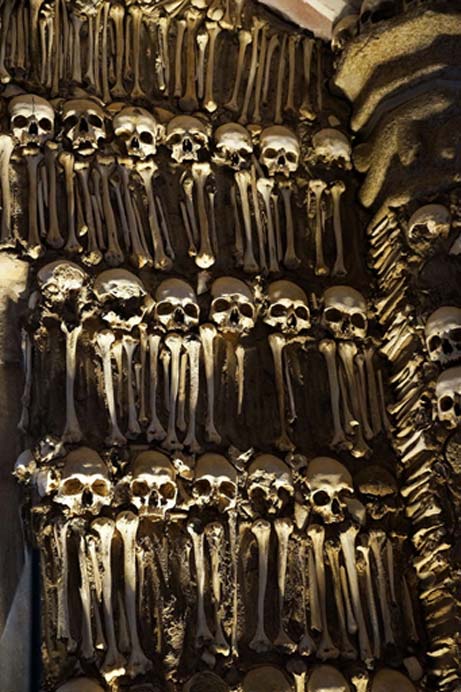
Another pattern of skulls ( CC BY-SA 2.0 )
Other features of the chapelIn addition to the bones, there are several other features to look out for in the Capela dos Ossos. One of them, for example, is the written messages displayed in the chapel. The most famous of these is located above the door of the chapel and is visible to all who enter. This message, written in Portuguese, reads “Nós ossos que aqui estamos, pelos vossos esperamos”, and translates as “Our bones that are here are waiting for yours”.
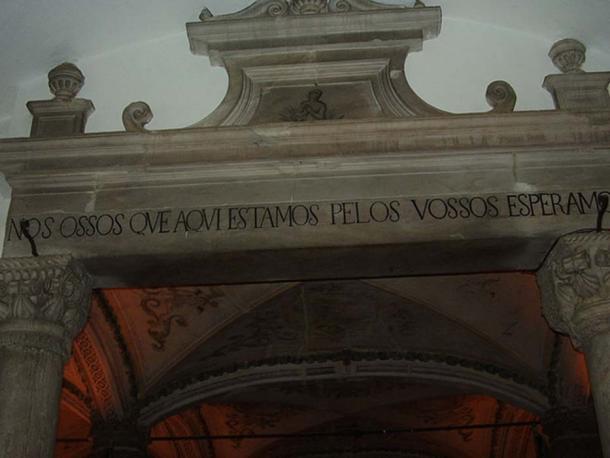
The inscription above the door translates as “We bones are here, waiting for yours.” ( Public domain )
Another curiosity of the Capela dos Ossos are two stuffed corpses, one of an adult and the other of a child, both hanging from ropes on a wall. Several stories surround these two individuals. According to one, the two corpses belonged to a woman and her son. Because they had been cursed by a powerful man, they were denied burial in local cemeteries, eventually finding refuge in the chapel. According to another story, the adult corpse belonged to an adulterous man and the child to his youngest son, both cursed by the man’s enraged wife.
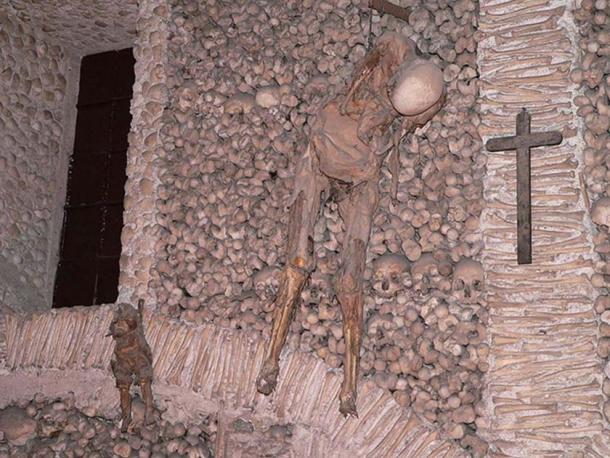
Headless bodies hung in Capela dos Ossos. ( CC BY-SA 2.0 )
Surprisingly, this is not the only bone chapel to be found in Portugal. Another is to the south in Faro, which is similarly decorated but only with the bones of monks, arguably even more gruesome as it includes a skull shrine.
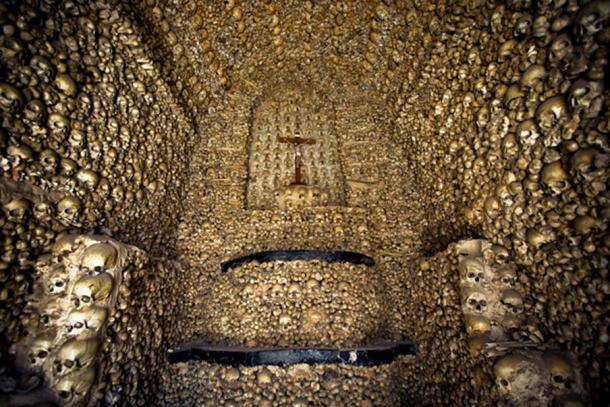
A skull shrine in another Portuguese Capela dos Ossos in Faro. (CC BY-NC-ND 2.0)
Top image: Dried corpse hanging on the wall of the Évora chapel






